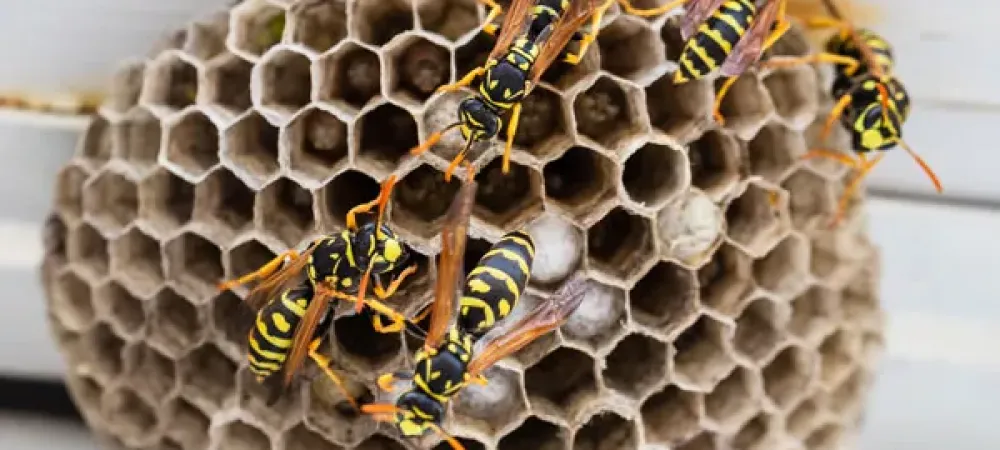The Ultimate Guide to Yellow Jacket Wasps

Yellow jacket wasps can be a common sight during the summer months, buzzing around picnics and backyard gatherings. But how much do you really know about these stinging insects? Whether you have encountered them before or just want to be prepared, having a comprehensive understanding of yellow jacket wasps is essential for your safety and peace of mind.
What Does a Yellow Jacket Look Like?
A yellow jacket is easily recognizable by its distinct black and yellow coloration. These aggressive stinging insects have a sleek, slender body with a noticeable "wasp waist" between the thorax and abdomen. Their heads feature compound eyes and short antennae with 13 segments, gradually increasing in size. Yellow jackets have four smoky, transparent wings that are folded longitudinally at rest. Despite potential variations between species, the iconic black and yellow pattern remains a consistent hallmark of yellow jackets.
What Do Yellow Jackets Eat?
Yellow jackets are opportunistic omnivores, meaning their diet is diverse and adaptable. They consume a wide range of foods, including:
- Insects
- Sugary substances
- Nectar
- Fruits
- Human food
- Picnic scraps
Why Are Yellow Jackets So Aggressive?
Yellow jackets are notably aggressive due to their protective nature and social structure. As social wasps, they live in colonies with a well-defined hierarchy comprising queens, workers, and drones. Their aggression primarily stems from their determination to defend their nests and colony members. When they perceive a threat to their territory or nest, yellow jackets swiftly respond with aggressive behavior, stinging potential intruders multiple times. This protective instinct, combined with their scavenging nature and the potential competition for food, contributes to their reputation for being aggressive insects.
How To Get Rid of Yellow Jackets
Getting rid of yellow jackets is essential to ensure the safety of both humans and the environment. Their aggressive behavior and painful stings can pose a significant threat, especially to those with allergies. Additionally, yellow jackets can disrupt outdoor activities and harm local ecosystems. To effectively eliminate yellow jackets, consider the following methods:
- Locate and Remove Nests: Identifying and removing yellow jacket nests is crucial. Look for nests in underground burrows, tree hollows, and building eaves. Approach nest removal with caution, as disturbing the colony can trigger aggressive behavior.
- Use Traps: Commercial traps designed to attract and capture yellow jackets can be effective. Place these traps away from high-traffic areas to minimize human contact.
- Seal Food Sources: Yellow jackets are drawn to sugary substances and human food. Properly seal trash cans and avoid leaving food out, especially during outdoor activities.
- Plant Repellent Herbs: Certain herbs like mint, citronella, and eucalyptus can act as natural repellents for yellow jackets when planted around outdoor gathering spaces.
- Limit Attractants: Minimize outdoor factors that attract yellow jackets, such as uncovered food, sugary drinks, and sweet fragrances.
- Regular Yard Maintenance: Keep outdoor areas well-maintained by trimming overgrown vegetation and sealing potential nesting sites.
- Preventive Measures: During early spring, consider setting up decoy traps to capture queen yellow jackets looking for nesting sites, preventing the formation of new colonies.
By adopting these methods, you can effectively eliminate yellow jacket infestations, creating a safer and more enjoyable environment for yourself and others.
Looking For Professional Stinging Insect Control?
When it comes to stinging insect control in the Triad area, Pest-X Exterminating is your trusted partner. Our team of skilled professionals is well-equipped to handle even the most challenging stinging insect infestations. Whether you're dealing with aggressive yellow jackets, wasps, or hornets, we have the expertise to locate and safely remove nests, minimizing the risk of stings and ensuring your peace of mind.
